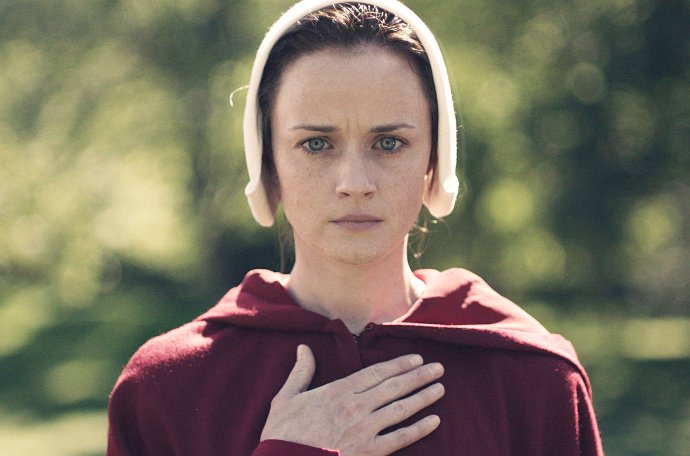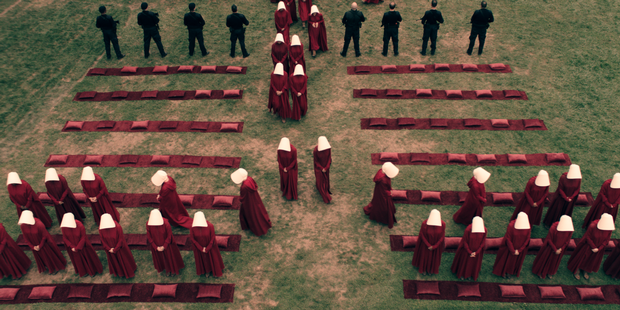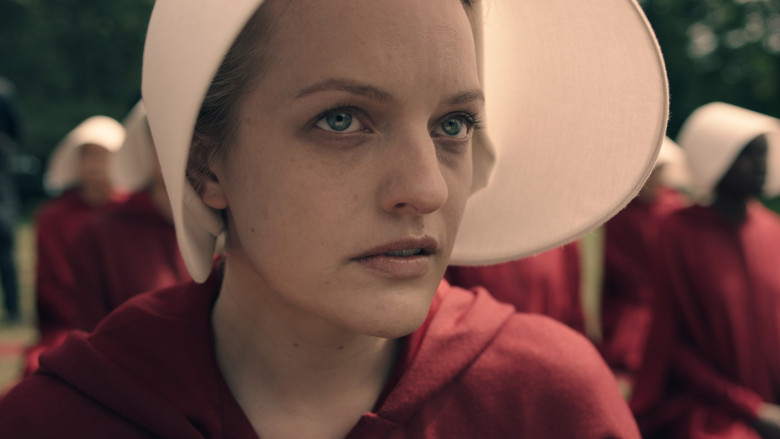Margaret Atwood has consistently refused to call her 1985 novel The Handmaid’s Tale a science fiction novel, insisting instead that it is speculative. “Science fiction has monsters and spaceships” she said, in an interview. “Speculative fiction could really happen.” Famously, she argued that the material she drew on for her dystopian nightmare were things that were really happening around the world. And, in a world where totalitarian governments are increasingly becoming a reality, could a new television adaptation come at a better or more relevant moment?
In a time where a totalitarian theocracy has overthrown the US government and created a new society named Gilead, fertile women are expected to become ‘handmaidens,’ bearing children to save the plummeting birth rate; effectively, they become “two-legged wombs.” One handmaiden, who has been named Offred (literally of-Fred, the man she has been assigned to) narrates this cruel new world, remembering her past life and exploring illegal relationships and an underground rebel movement, whilst trying not to be discovered or remain barren lest she be sent to become an ‘unwoman’ in the colonies, where she will be exposed to radiation poisoning and die.
Elisabeth Moss’s raw energy as Offred, communicating in the small ways that she can through minute facial expressions, body language and more overtly in voiceovers, reflects perfectly her dissident thoughts contrasted with terrifying obedience; similarly, Alexis Bledel as Ofglen reflects the distrust between the handmaidens, how one is forced to adopt a foreign persona and act before the law-enforcers of the Republic, the Eyes.

This adaptation, more than anything, reminds us that this is not science fiction. Constantly, we are prodded with realism – SBTRKT’s anthem Wildfire permeating pre-Gilead flashbacks, mentions of the apps Uber and Tinder – and this is done seamlessly, breaking the notoriety of TV flashbacks being clunky, instead making the past and present seem worringly interwoven. With title graphics that are starkly Tarantino-esque, we’re immediately signified with not only violence, but a modern world – block primary colours, harsh edges.
The scene where the handmaidens blame a woman for being gang raped is all too familiar in our climate of a shaming rhetoric; a third of people in the UK believe a woman who acts flirtatiously is blame for being raped, and over a quarter believe a woman is partly responsible for being raped if she wears sexy or revealing clothing or is drunk. Disgustingly, when the handmaidens mechanically bark “teach her a lesson, teach her a lesson, teach her a lesson” at the victim, we must question if we are really being that far flung from reality. Indeed, the potential for today’s political climate to develop into something more menacing like in Gilead, where Trump’s government is systematically attacking women’s reproductive rights, has not gone unnoticed, with activists dressing up as handmaids to defend reproductive rights in Missouri. The forced wearing of headpieces and being unable to travel without an escort is worryingly reminiscent of Saudi Arabia’s guardianship system also.

Clearly, Atwood’s world poses many difficulties to be shown onscreen; last night’s episode was a wonderful, if grotesque, introduction, with many viewers being “traumatised,” branding it “too disturbing,” yet simultaneously celebrating its unflinching portrayal of Atwood’s shocking novel. With it being a ten-part series, it will be interesting to see how the narrative develops; whether it will continue its theme of reminding us that this could really happen, or turn instead to the perhaps easier route of sensationalism. One thing is for sure – it won’t be a relaxing watch.

Great review, very excited (and nervous) to start watching this one.
LikeLiked by 1 person